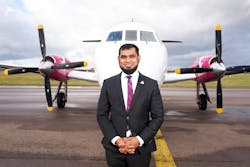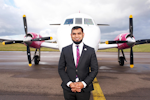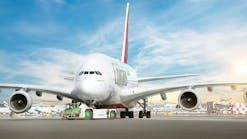Time is a valuable commodity across markets. How a business can achieve, in less time, the delivery of a product or service, without undermining quality, is the building block for success. This is the case for any company with a commitment to customer service. How does this connect to private aviation?
Small and medium-sized enterprises (SMEs), with a reduced group of employees and overall budget, need to accomplish more in less time to remain relevant. And private aviation translates in less time wasted at the airport, arriving closer to destination and departing when needed. SMEs are heavily influenced by their CEOs and therefore they are the ones promoting this service as a means towards overall efficiency.
In a constant search for underdeveloped markets without multinational corporations, SMEs often search for clients in locations with no commercial airline connections; a scenario where private aviation thrives by its ability to take the most direct route for the delivery of a service or product. This reduces long and costly ground transfers before reaching the destination.
Not only small and medium-sized enterprises are enjoying the trend. On the receiving end, small-town clients are also satisfying their needs thanks to private aviation, with no need to move for a product or service. “We call it the virtuous cycle of private aviation. It’s happening in developed and emerging economies alike, in an era where maximizing profits is paramount for the long-term success of any business. And time-efficiency is the one variable that gels this whole process together,” notes Kazi Rahman, CEO for Firnas Private.
Big versus small
The National Business Aviation Association (NBAA) released last year the findings of a research conducted by The Harris Poll called “The Real World of Business Aviation: 2018 Survey of Companies Using General Aviation Aircraft. The study had some key facts that support the increased role of SMEs in this segment:
- Smaller companies are more likely to be using private aircraft; 70% of flights were linked to companies with 500 or fewer employees. Those with over 5,000 employees accounted for just 17% of flights.
- Companies that own or operate an aircraft are likely to have just one. Sixty-two percent of businesses owned one, compared with 38% owning more than one.
Furthermore, flexibility is cited as the primary reason to use business aircraft as opposed to commercial flights. Fifty-two percent noted that regular commercial airlines could not accommodate their scheduling needs.
What planes are companies using?
Small businesses rely on turboprops worldwide. It’s the case in Europe, the U.S., Canada and Australia, where executives build their agendas around the flexibility granted by this segment. Although in the U.S. specifically, according to the survey, 45% of all operations are heavy or medium jets. The majority are smaller – light jets (19%), turboprops (17%), or other small aircraft (20%).
The previous is supported by NBAA’s No Plane, No gain campaign. It started in 2010 as an effort between the NBAA and the General Aviation Manufacturers Association in the U.S., with the purpose to educate the public on the importance of private aviation for its communities, companies, and citizens. Today, almost 10 years down the runway, it remains strong and serves as a resource for debates about the future of the industry.
Why some corporations insist on owning an aircraft?
On the other side of the road, there are large corporations that are still buying private aircraft. Like Tesla’s Elon Musk, who registered over 250 private flights in 2018, and Warren Buffet, well-known to fly the world on one of his company’s registered aircraft. In their case owning a jet is justified by the number of hours they spend in the sky, more than 300 per year, which is the break-even point to decide if there’s real value to absorb the considerable package of costs that come with owning.
For starters, devaluation, insurance, a flying crew, a maintenance program, scheduled and non-scheduled, and FBO fees (hangar, fuel, flight dispatch).
Buying a jet shouldn’t be for everyone. Almost 80% of all private flights are 2 hours or fewer, which precisely fits the needs of SMEs. Companies like Firnas Private, previously known as Firnas Airways, a UK based private air transport operator, was founded with this specific trend in mind, flying passengers all around Europe on short flights, to places with no commercial connections.
In conclusion, access to private aviation has risen during the past years because of an increase in availability, a change in perception, competitive prices worldwide and, most importantly, to the critical lift it provides to smaller communities. In fact, according to the NBAA research, “many business aircraft are largely flown to towns with little or no airline service, with pilots reporting that, on average, 31.5 percent of their flights over the past year were to destinations lacking any scheduled airline service”.
About Kazi Rahman - Founder & CEO Firnas Private
The businessman, who has featured regularly on British prime time television, is a national celebrity and an award-winning international corporate personality.
Prior to reaching for the skies with Firnas Private, Rahman co-founded Sunnamusk, a fast-growing and highly successful Arabian fine fragrance UK retail company.





